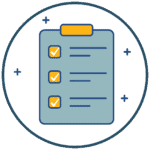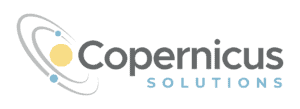ASSESSMENT AND DATA
How do you identify unfinished learning to build necessary learning bridges?
WHY
- After such major disruptions, it is essential that students engage immediately and consistently in the affirmative act of learning new ideas, not be deemed deficient because of events outside of their control.
- Uncovering and addressing unfinished learning in the context of grade-level work will require teachers to know what students know and can do throughout the school year. This means assessing their knowledge and skills.


KEY TAKEAWAYS
Assessment should:
- Be used to determine how to bring students into grade-level instruction, not whether to bring them into it.
- Center in formative practices. Leverage such sources of information as exit tickets, student work, and student discussions. Use these sources of information to inform instructional choices in connection with high-quality instructional materials.
- Focus on content aligned with priority content/standards.
- Be directly linked to curriculum.
Assessments should NOT:
- Focus on assessing every standard from the prior grade/subject in order to create a comprehensive audit of unfinished learning. Be cautious of large scale assessments. While they provide valuable data, they are not generally tied to the just-in-time needs of students.
- Be used as barriers to new/complex content. Avoid administering back-to-school assessments focused on isolated standards to determine, e.g., students’ generalized reading comprehension level.
CURATED TIPS
- Prioritize. Scale back benchmarks and summative assessments not focused on diagnosing unfinished learning for priority content. See the prioritizing content section for tips.
- Assess to support students with grade-level priority content. The goal of assessments is to give teachers information to support all students in mastering priority standards. Instructional assessments, if administered, should be highly streamlined to check on only those necessary elements that might hinder access to grade-level work (e.g., students’ knowledge base, fluency with grade-level text).
- Choose assessments wisely. Use assessments aligned with high-quality, adopted curriculum as often as possible. If you are not using a high-quality curriculum with assessments embedded, be sure to use assessments that align with understanding student proficiency within subject content. Here are some tools to help. Consider using strong district guidance in creating assessments.
- Plan the timing of assessments:
- Consider a tiered approach to assessment. Plan to only spend only a few hours assessing and diagnosing over the course of the year. Different students may need more or different assessments in order to inform the intervention plan.
- Monitor progress with formative and “just-in-time” assessments. Identify the “just-in-time” assessments that are available to teachers. Use the information gained from formative assessment as the primary source of data regarding what students know and can do.
- Use targeted checks. Most assessments throughout the school year should occur primarily via targeted checks (e.g., checks for reading fluency) and formative practices (e.g., leveraging exit tickets, student work, student discussions to inform instructional choices). Recommendations for these practices should be informed by high-quality instructional materials. Targeted checks are a good alternative to assessment choices that have the potential to serve as a gatekeeper to grade-level content. It also deliberately recognizes the very real social-emotional needs of students—particularly students who have been disproportionately affected by the pandemic.
- Codify the assessment plans. Codify the necessary operational plans for accelerating learning, specifying testing windows, data collection process, etc. Review the steps for teachers below and implement them collaboratively.
- Communicate clearly with teachers. Remind staff why the organization is taking this approach. Send reminders for teachers to complete the process.
- Provide professional development when needed. Specific steps and tools can be found in the CCEE Field Guide for Learning, Equity and Well-Being under the staff support section for creating a learning culture.
- Beware of foundational reading.
- Plan for brief screeners. Administer a brief screener at the beginning of the year and at periodic checkpoints throughout the school year. Prioritize letter inventory, phonological awareness, and grade-level appropriate sound and spelling patterns for each student. (Other considerations in the Assessment and Data section still apply.)
- Connect formative assessments to daily lessons. Ensure frequent formative assessments can be folded into daily lessons (e.g., checklists, sampling dictation responses, monitoring of student work). These should be used to adjust instruction and focus on:
- Students’ phonological awareness, connecting to phonics as appropriate.
- Students’ ability to decode and encode new words based on grade-level-appropriate phonics instruction.
VIDEO RESOURCE
“Planning Your Approach to Diagnosing Student Learning”, a 22-minute video developed by the CCEE and TNTP.
Steps for Teachers: Using Assessments to Accelerate Learning
- Prioritize. Remember to diagnose unfinished learning for priority content first. See the prioritizing content section for tips.
- Using high-quality adopted materials as often as possible. Designing assessments is truly challenging, so using the diagnostic assessment provided by the high-quality instructional materials you’ve adopted is the best way to diagnose gaps that students might have in their learning.
- Use assessment data to develop and guide appropriate. Assessments should reveal what students already understand and what further connections might be necessary for them to fully access grade-level content.
- Identify missing prerequisites. Identify any missing prerequisite skills based on the diagnostic data. Use aligned tools to help with this, such as documents on where to focus (broken down by grade level) and coherence maps.
- Choose a delivery model. Based on data, consider when to leverage whole-group remediation to address learning gaps and when targeted intervention may make more sense. It is crucial not to make assumptions about where all students are. Instead, use data to make strategic decisions about students’ needs. Some classrooms may need whole-group remediation on content from the previous grade. For example, if an entire second-grade class is missing the spellings for /r/-controlled vowel sounds, that teacher may need to build in practice opportunities for students to build their automaticity with this particular reading foundational skill. However, if it’s a small portion of the class, using your intervention block to serve those students will be a better approach.
- Use flexible grouping. At times, it may make sense to group students by proficiency vs. those who need help on the priority content . Quick mini lessons are the best way to do this in order to avoid long chunks of remediation.
- Revisit your intervention block. Depending on what schools have been using for intervention, you may need to retool the content of your intervention block to be more aligned to specific learning gaps and content from the previous grade.
- Follow subject-specific guidance. Diagnosing students’ unfinished learning in English Language Arts and mathematics may look different. Foundational reading in particular requires additional considerations and support found in another section in this playbook.
- Elementary and secondary English Language Arts: Teachers should diagnose students’ reading fluency using this guidance and, for elementary students, assess reading foundational skills using an assessment like DIBELS. Additionally, identify which students have reading comprehension and writing skills below grade-level using high-quality, short assessments like these. Check our reading section for more information.
- Elementary and secondary mathematics: Rather than giving one significant diagnostic assessment upfront, consider using the Achieve the Core coherence map at the beginning of each unit throughout the year to determine which prerequisite skills will be most important for your students to master their current grade level’s content. Then diagnose whether students have those skills using assessments like these.
ADDITIONAL RESOURCES
- General resources:
- Dos and don’ts by grade-level from Instruction Partners
- CCEE: The Components of a Balanced Assessment System
- CCEE: Assessment for Learning in Extraordinary Times, a three-part series intended to help participants learn how to blend different formative assessment moves to make better instructional decisions.
- CCEE: Insta-Data: Real Time Formative Assessment that Works
- Learning as We Go: Principles for Effective Assessment during the COVID-19 Pandemic by CRPE
- Subject specific resources:
- CCEE Field Guide resources for Accelerating Learning (ELA, math, science)
- Where to focus documents by grade-level and connections between standards by Achieve the Core (math)
- Math fluency inventories by the National Council of Teachers of Mathematics
- Qualitative and quantitative rubrics for people who don’t have an adopted curriculum or embedded assessments (ELA) by Achieve the Core




